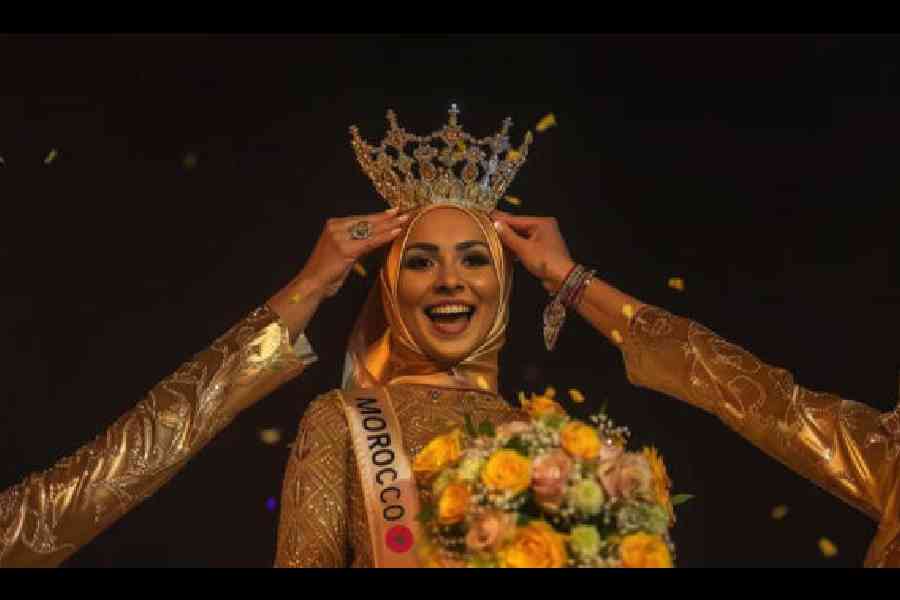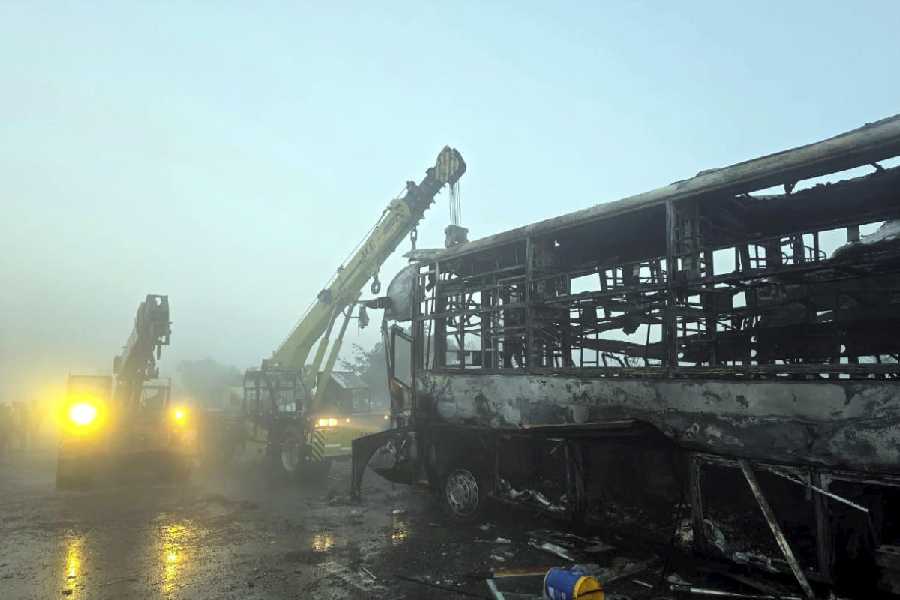Last year called to say hello to “digital twins”. Mathilda Gvarliani is an in-demand model who was featured on the cover of Vogue Netherlands. She also works with fashion retailer H&M. Two photographs of her were taken by the fashion brand, wearing a white tank top and jeans. One of the photos features the model in person while the other is an artificially played-upon frame of her.
A few days ago, fashion industry news outlet The Business of Fashion published the images. In one, she is seen holding the waistband of her jeans and, in the other, her “digital twin” has her arms crossed, eyes on the camera. The message across the pictures is a quote from Gvarliani: “She’s like me, without the jet lag.”
If you thought the fashion world is not working with artificial intelligence, surprise, surprise. Gvarliani is not the only one; several models that H&M is working with this year will allow digital replicas for use on the company’s social media platforms and in its marketing campaigns, the publication reported.
H&M said the models will retain rights over their digital replicas and their use by the company and other brands for purposes such as marketing. Chances are such images will be tagged with an AI label when used for social media since the likes of Instagram and TikTok require users to disclose the use of AI.
Questions need to be asked
Why use “digital twins”? First, it’s relatively inexpensive to work with the computer-generated likeness of a person. Second, turnaround time for campaigns is reduced. Third, there are more “variations” to a shoot to take the social media and marketing game up to scratch. Many industries and firms are using AI to meet demands for content such as marketing material.
But none of these justify the overall impact on models and independent contractors, like hair stylists and make-up artists, who are part of the labour force and without whom photo shoots are impossible.
“We are merely exploring what is possible, and we are doing so in close collaboration with other creatives within the industry, agencies and the models themselves — who are in full control of when the ‘digital twin’ would be used, and will of course get paid when it is being used,” Hacan Andersson, a spokesman for H&M, told The New York Times.
More brands are logging in
H&M is not alone. A couple of months ago, Jan Philipp Wintjes, executive vice-president of global omnichannel at Hugo Boss, shared on his LinkedIn that the company had started using generative AI to create images and videos.
“This isn’t just about leveraging cutting-edge technology, it’s about delivering meaningful innovation that drives tangible results for our customers and our business,” he wrote on LinkedIn.
Levi Strauss & Co is also open to using generative AI for product images. The company said in 2023 that they would trial the use of AI-generated model images as a way to "increase diversity”.
Last year, the fashion brand Mango showcased a campaign for a teen line of clothing, using AI technology that Jordi Alex, its chief information technology officer, said “will either make us more human or it won’t”.
Take the case of Israeli AI company Botika, which secured $8 million in seed funding to help it further develop its generative AI technology to turn a simple product shot of clothing into a full-fledged fashion shoot.

File picture of the facade of Swedish clothing retailer H&M in Germany. Picture: Getty Images
Since shoppers rely on images of clothing before making buying decisions, such AI solutions are in demand and are viable, especially for smaller online-only fashion brands that can’t splurge on expensive shoots.
Eye on China
Generative AI is not a fresher to the fashion industry, especially in China. It is already being used to accelerate fabric simulation, helping cut down the development cycle to, in some cases, 72 hours. AI is also refining designs in real-time with AR fittings.
Alibaba’s Tmall AI-powered virtual fitting room offers styling recommendations based on user body shape and style preferences. All of this is unlike Snapchat’s AR shopping plugin. In China, platforms are driving a more immersive shopping experience.
There is another side to the use of AI in the fashion and beauty industry. Artificial intelligence is fuelling AI “inspo” or inspiration. Users of AI platforms are looking for impossible details that are difficult to meet in the real world. Now, the search for wedding venues or even crystal chandeliers is driven by AI.
Before era AI, people walked into a store with pictures of celebrities from magazines or filtered pictures of online influences. Now, they are armed with computer-generated images.
Experts predict an upsurge in the use of AI. A couple of decades ago, people called out the use of Photoshop in fashion campaigns. Now, many assume everything is Photoshopped. It’s a shift that cannot be ignored.
Not all models are happy

In 2024, Mango used generative AI for its campaign to promote its Teen line. Picture: Mango
Model-turned-activist Sara Ziff, who founded the New York-based non-profit organisation Model Alliance, said in a statement: “In an industry that has historically been a backwater for workers’ rights, H&M’s new initiative raises critical questions about consent and compensation, and has the potential to replace a host of fashion workers—including make-up artists, hair stylists, and other creative artists in our community.”
The impact of AI models on consumers cannot be ignored. It’s hard to detect an AI model when one is thumbing through social media feeds. AI models may give rise to the narrative of being frozen in time, that is, never ageing. Since the days of Archie comics, many have had issues with body shapes. AI models won’t help. We have to deal with the fact that the person showing us clothing styles may not be real.
Some fashion brands are using algorithms to quickly figure out trends and then roll out the same through modelled photoshoots. Now, think of “digital twins” in this space.
In New York, Fashion Workers Act goes into effect in June. It may address some of the concerns about the use of AI by offering protections to models. Senator Brad Hoylman-Sigal said the labour law would “protect fashion models from being financially abused and having their images used without their consent”.
But we need more solutions. After all, last year saw the world’s first-ever AI beauty pageant — Kenza Layli, a Moroccan lifestyle “influencer” created by Myriam Bessa, founder of the Phoenix AI agency. Let’s see what 2025 holds for the fashion world.
Mathures Paul










